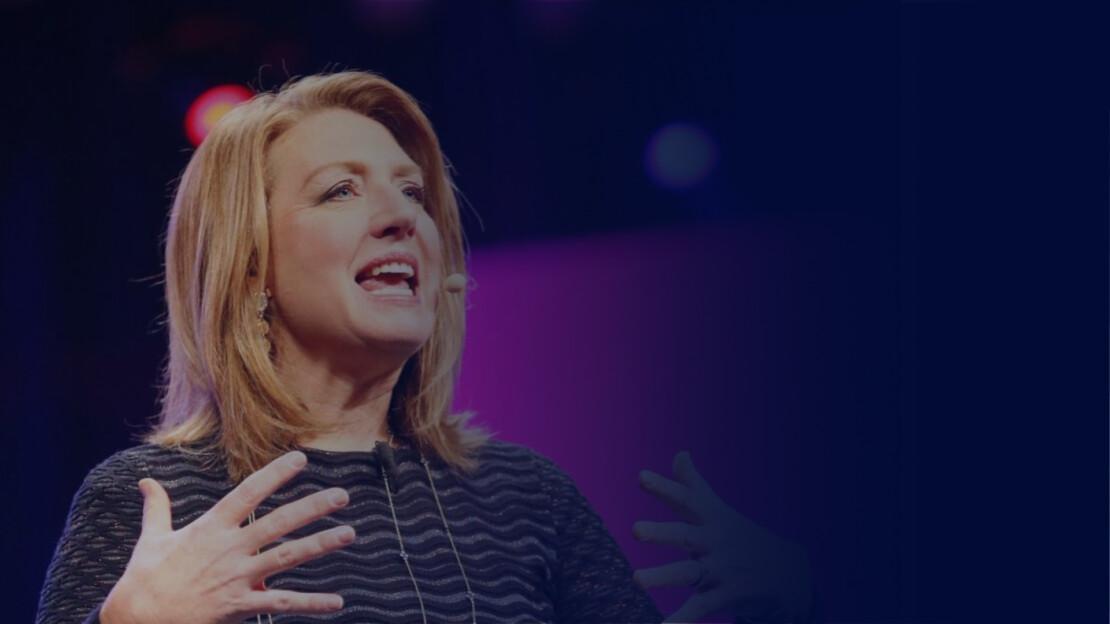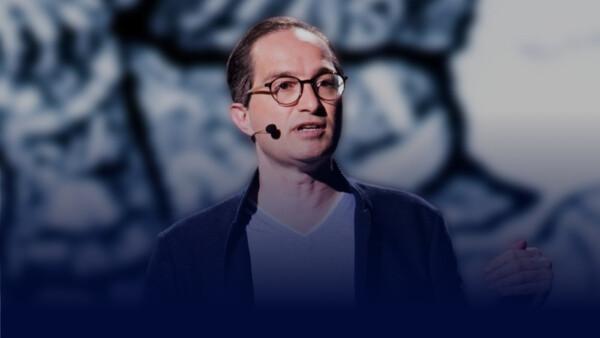24Apr2024
Liz Wiseman, a renowned leadership expert and CEO of the Wiseman Group, advises executives globally and has authored bestsellers like Multipliers and Impact Players. With clients such as Apple, Google, and Netflix, she is celebrated as a top management thinker holding a leadership award from the prestigious Thinkers50. She is also one of the Nordic Business Forum 2024 speakers.
We recently sat down with her to discuss talent development, team collaboration, and leadership, and here’s what we learned!
Nurturing Talent: The Fusion Approach
Liz began by emphasizing the critical role of talent development in leadership, especially during periods of growth, change, and innovation. Leaders often follow one of two traditional paths: competency mapping or playing to strengths.
However, Liz advocates for a “fusion approach” that combines the best of both. This method involves recognizing an individual’s native genius—what they do effortlessly and excel at—and aligning these strengths with the organization’s most pressing challenges. Liz believes that such alignment not only drives individuals to outperform but also helps close skill gaps.
“In the research I’ve done, people describe working for leaders who do that as not tiring, but exhilarating because their unique capabilities are recognized. And they’re not just recognized and put on a small project, but they’re recognized and then used and deployed against the hardest challenges of the organization. That’s where people tend to do their best work and get the most energy.”
Liz added that fusing the two traditional approaches into this one more powerful approach allows leaders to not only nurture their talent but simultaneously tackle their biggest challenges.
Personalized vs Structured Talent Development
Businesses come in many shapes and sizes—and so does talent development. How should organizations structure their development programs? Or should they?
Liz calls for both overarching development plans and personalized learning paths when it comes to talent development. Large organizations, like Microsoft, need to implement structured plans to foster a growth mindset across the company. She also suggested that a structured plan makes sense for developing those key competencies that the entire organization is going to need going forward.
At the same time, Liz highlighted that in regard to each employee’s personal development, leaders should allow individuals to “choose their own adventure.” This adaptable approach accelerates development and enhances personal engagement.
“People almost always do their best work and their best learning when they are the ones initiating it.”
Encouraging Collaboration through Recognition
Liz noted that a common pain point for leaders, based on her experience, is the lack of collaboration within organizations and teams.
“Stoking, nurturing, and developing collaboration is a constant challenge for leaders because so often people are put in a competitive environment. They’re not just competing out in the marketplace—they’re competing on their teams for recognition, attention, projects, and rewards.”
Liz believes that to tackle possible problems caused by competition between employees, leaders should learn how to break down unnecessary rivalry. First, leaders should understand that most teams don’t have a single Superstar or MVP (most valuable player). According to Liz, in most cases, each team consists of a group of individuals, “impact players”, who each play a crucial role in different moments.
“Impact player is someone who is a standout contributor—creating extraordinary value and raising the level of play for the whole team. That can be any member of the team at any moment.”
Leaders should start by understanding each member’s “native genius”, and then communicate and discuss these strengths openly within the team. This allows leaders to openly celebrate the impact player at a given time while other team members understand why that person is recognized. Liz argued that when leaders appreciate each member of the team according to their impact at key moments, they will feel seen as an essential part of the project at hand. This approach shifts the focus from competition to complementary strengths, where each person’s unique abilities contribute to the team’s success.
“Collaboration just naturally follows because everyone on the team knows what they are good at and what their colleagues are good at.”
Leadership Principles Across Cultures and Industries
Leadership is ultimately about people, and people are different. Are there some universal principles that could be applied regardless of the company’s size, location, or industry?
“I grew up in the technology industry, in the heart of Silicon Valley. Since, it has been a privilege to get to study and teach leadership all around the world. When I began this work, perhaps rightly so, I was nervous that I wouldn’t understand organizations outside my own culture or that I wouldn’t understand organizations outside of my own industry. I’ve gone in with my eyes wide open really trying to understand cultural differences—and there are many. But what I have found over several decades of doing this, is that we are far more alike than we are different.”
Liz highlighted that her work and research across various sectors and around the world reveal a few universal principles of effective leadership:
- The general desire for contribution, recognition, and growth. “I have learned that most people all around the world come to work desperately wanting to contribute all of their intelligence, capability, and ideas.”
- The importance of psychological safety coupled with challenging opportunities. “People want leaders who create psychological safety; they want an environment that feels safe to speak up, to take risks, and to experiment. But a universal truth is that people thrive in environments that are not only safe but also challenging.”
- The negative impact of diminishing leadership. “I have not found a continent or a company where people would thrive under diminishing leadership or where they would appreciate diminishing leadership.”
At Nordic Business Forum 2024, Liz will talk more about what she calls multiplier leaders and diminisher leaders. In short, the multipliers are able to make their employees outperform, while the diminishers create an unproductive dynamic within their organizations. Liz underlined that what she has found is that most of the diminishing is actually accidental—done by leaders who are trying to do the right thing.
“Our best intentions can be misinterpreted, and there is a big gap between our intentions and our impact. I think what the best leaders do is they look into that pit and figure out: how do I bring together my intention and my impact?”
Leadership Now: Evolving Responsibilities
When we asked Liz about her views on the evolving role of leaders and leadership, she sighed: “Oh goodness, I see the role of leaders changing radically. And I think the role that most leaders find themselves in today, is not the one that they signed up for.”
Liz pointed out that leaders today face increasing responsibilities, including mental health support and social justice advocacy.
“It’s a lot of pressure, which is the reason why leaders can no longer operate from a platform of having all the answers.”
She also underlined how earlier, leaders were expected to be the people who determine a common direction and lead their team towards that goal. In a training she once attended, leadership was explained to be: “I know a better place, take my hand, follow me, and I will lead you there.” If it was true back then, it’s certainly not true anymore.
“Most organizations are now in uncharted territories. They’re climbing mountains no one’s climbed before. They’re doing this while conditions are changing. The route is changing. The destination is changing. Leaders are taking their people to places that the leaders themselves have never been.”
Therefore, rather than showing the way, leaders are now in charge of keeping the conversation going and keeping everyone on board.
“Now, your job as a leader is to build trust, get people talking to each other, and learn together. It’s such a different job than ‘take my hand and I will lead you there’.”
Moreover, the rapid pace of technological advancement requires a leadership style that is more collaborative and exploratory than directive. Going forward, leaders must rely on collective team wisdom rather than individual expertise.
Courageous Leadership: Trust and Vulnerability
Finally, we asked Liz to explain what our Nordic Business Forum 2024 theme Courageous Leadership means to her. Firstly, Liz interpreted it as the bravery to trust others. This trust empowers teams to undertake bold actions and innovate. Liz also called for leaders to shift their focus from earning others’ trust to extending trust towards their team.
”So much of what has been studied and written about leadership is how do you get other people to trust you as a leader. And I think it’s the wrong way to look at it. I think courageous leadership is having the courage to trust the people around you. When people are trusted they do amazing and bold things.”
Secondly, Liz felt that courageous leaders admit their own limitations.
“I think one of the most courageous things a leader can do is to admit what they don’t know. And I’ve seen this behavior change organizations.”
She shared an example where a C-level leader in a large organization spoke to the organization and said the powerful (and scary) words: ‘I don’t know’. That pulled the whole organization to solve the problem together and ended up changing the course of the company.
While wrapping up, we started discussing empathy as an important attribute for courageous leaders.
“I think people are distrustful of empathetic leaders in a way because they think empathetic leadership is soft. But I think you need to start with empathy to create something great. You can have high empathy and high accountability, high empathy, and high performance. We need to see that those are not at odds.”
Trust, vulnerability, and empathy are the leadership traits that can help leaders nurture their talent, enforce collaboration, and multiply the impact of their organization. Now think: how can you become a courageous leader?

 by:
by: 

